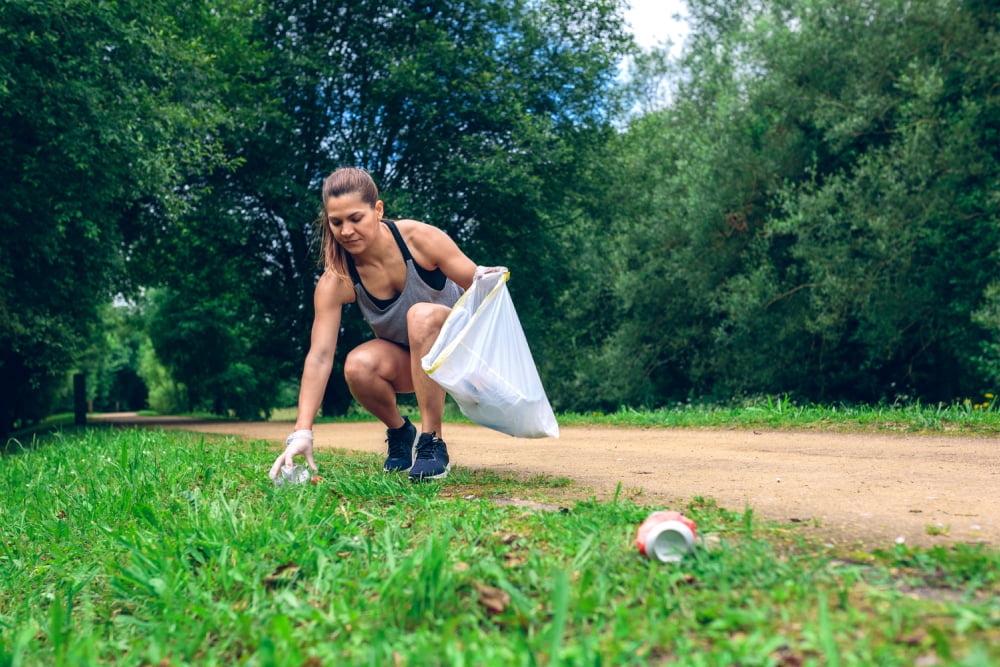7 tips and hacks for using trash bags and cans

Garbage bags and cans are handy for disposing of waste and keeping the home clean. However, nobody likes to take out the trash because the container often overflows or the bag breaks, leaving a lot of mess. With that in mind, we listed some easy tricks and tips for using garbage cans and bags at home. Following these suggestions carefully can reduce hassle and make handling and managing trash easier for everyone.
Create a liquid-absorbing layer
Many people notice their trash leak, making the floor wet and dirty. This issue often arises when liquid waste seeps through the bag or spills through a hole. An easy way to fix the problem is to use old paper towels or broken-down cardboard or pizza boxes that anyway need to go into the trash. One can place these dry papers at the bottom of the trash. This dry layer can absorb the liquids when the bag leaks, preventing a mess in the house.
Use adhesive hooks
A common problem with trash bags is that their opening often falls inwards as people dump garbage throughout the day. Constantly pulling the edges with one’s hands is not only inconvenient but also unhygienic. An easy way to keep the edges from falling inwards is to stick adhesive hooks at each side of the can. Individuals should put these adhesive hooks upside down, a few inches below the opening. When putting a new bag into the can, one can tuck the drawstrings around these hooks. Doing so will prevent the bag’s mouth from closing as people dump garbage.
Keep the smell away
Ideally, trash cans do not smell if cleaned every day. However, if cleaning is delayed for some reason, or the container emanates an unusual smell, there is a trick to get rid of it using essential oils. One can take a clean, dry paper towel and apply a few drops of essential oil on it. The oil can be of any fragrance one likes. After applying the oil, one must drop this paper towel at the bottom of the trash can before lining it with a garbage bag. The lingering essential oil fragrance will help mask the smell of the garbage when the bag is filled.
Use kitty litter
Another easy way to manage foul smell is to use dry kitty litter. It helps absorb the smell just as well. However, one downside to this trick is that the litter can get clumped if there is a liquid leak or the bag tears. Cleaning clumped litter out of the trash can becomes another chore, making this DIY tip more hectic.
Consider recycling
Recycling not only helps protect the environment but also keeps the trash can at home from constantly filling up. One can add recyclable items to the curbside bin daily and try to reuse things instead of throwing them away. Following this approach helps individuals save on purchasing trash can bags, which can be expensive. Sure, it may take effort, but it can provide several benefits.
Drill holes in garbage cans
Spillage is a common occurrence when taking the trash out. It often happens because the vacuum created in the can pulls the bag down when someone tries to remove it. This sometimes tears the bag, making the place dirty. An easy way to fix this issue is to drill holes in the cans on the side. The holes allow the air to pass through and prevent it from creating a suction when the bag is tried to be lifted out of the can.
Store spare bags in the trash can
If someone often misplaces trash can bags, they can toss the bundle at the bottom of the trash can. This way, one does not have to go around the house looking for a new trash bag every time they empty the can. One can easily replace the old bag with a new one, saving time and effort.
Besides following the tips listed here, one should clean their trash can thoroughly every couple of days. Individuals can use a soap wash to scrub the inside and eliminate stains and dirt. Once done, the can can be kept outside for some time to dry under the sun and air out. Individuals should never place a new bag in a wet can. Keeping the trash can clean can prevent it from releasing a bad smell. Although cleaning the can can take time and effort, it is necessary for the health and well-being of those living in the house.

